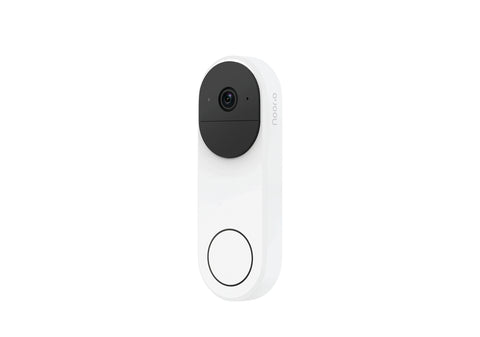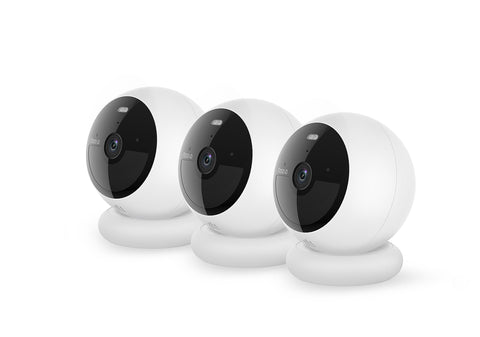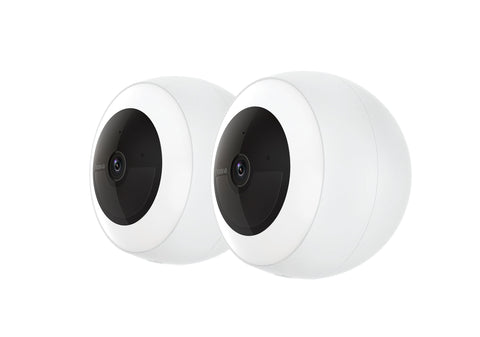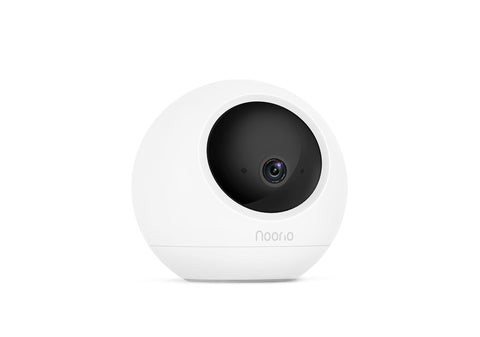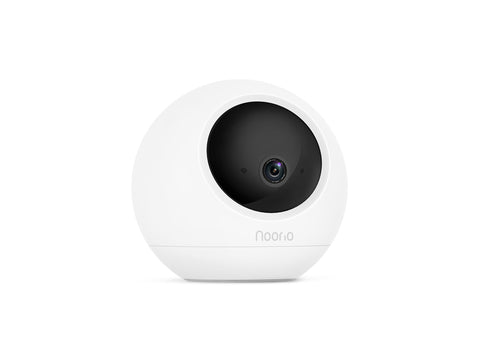Introduction
Installing outdoor security cameras is becoming increasingly popular for home monitoring and deterrence. Two common options are spotlight and floodlight cameras, but what is the difference between them, and which is better for your needs? This comprehensive guide will compare key factors like lighting, installation, features, and cost to help you decide whether a spotlight or floodlight camera is the best choice to secure your property.
Spotlight Camera Overview
A spotlight camera is a security camera with a built-in high-intensity LED spotlight that shines a focused beam of light over a defined area. Key features of spotlight cameras include:
- Integrated Lights: Equipped with built-in spotlights that can illuminate specific areas upon motion detection or when activated manually.
- Motion Detection: Advanced motion sensors that trigger recording and alerts and can often be customized to monitor specific zones.
- High-Resolution Video: Offers high-definition video capture to clearly identify faces and other important details.
- Two-Way Audio: Includes a microphone and speaker for communication with visitors or intruders.
- Night Vision: Infrared night vision capability for clear footage even in low-light conditions without using the spotlight.
- Remote Control: Users can operate and adjust the camera settings remotely via a smartphone app.
- Smart Home Integration: Compatibility with smart home ecosystems for seamless automation and control.
- Weather-Resistant Design: Built to withstand outdoor weather conditions like rain, heat, and cold.
- Local and Cloud Storage: Options for storing recorded footage on local devices or in the cloud.
Spotlight cameras work well to monitor and illuminate targeted zones like entryways, gates, pathways, garage doors, and small yards. Their convenient battery power and compact size make spotlight cameras easy to install virtually anywhere.

Floodlight Camera Overview
A floodlight camera is a security device that combines a motion-activated bright light with an integrated video camera. Floodlight cameras are characterized by:
- Powerful Illumination: High-intensity floodlights are designed to cover wide areas, deterring intruders by brightly lighting up spaces.
- Motion-Activated Lights and Recording: Activates lights and begins recording upon detecting motion, offering both deterrence and documentation.
- Wide Field of View: A broad viewing angle to monitor extensive areas with a single camera.
- Siren Alarm: Often equipped with a loud siren that can be triggered during an event to scare off trespassers.
- Full-Color Night Vision: Some models provide full-color video at night when floodlights are activated, unlike traditional infrared night vision.
- High-Definition Video Quality: Captures high-resolution footage for detailed imaging.
- Two-Way Talk: Allows users to hear and speak to people on camera through the device's app.
- Advanced Motion Detection: Adjustable to reduce false alarms and enable focus on priority areas.
- Wi-Fi Connectivity: Connects to a wireless network for remote access and control.
- Robust Weatherproofing: Designed to operate effectively despite adverse weather conditions.
Floodlight cameras are ideal for monitoring large, open spaces like backyards, patios, alleys, and driveways. Their ultra-bright illumination can light up an entire yard or exterior space.
Comparing Spotlight and Floodlight Cameras
1. Brightness and Illumination
The most noticeable difference between floodlight and spotlight cameras is light brightness. Floodlight cameras output a very high number of lumens, typically around 1800 to 3000 lumens. Spotlight cameras emit a focused beam in the 300-400 lumen range.
This considerable brightness difference means floodlight cameras can effectively illuminate large open areas like yards and driveways at night. Spotlight cameras provide a more concentrated light beam suited for covering a single entry point or pathway.
2. Installation and Wiring
Spotlight cameras are powered by rechargeable batteries or an optional wired power connection, making them very flexible to install anywhere without needing wiring. Floodlight cameras must be hardwired to an electrical connection for continuous power.
The battery-operated capability of the spotlight camera allows easy installation in any location, but batteries must be replaced every 2-3 years. The floodlight camera requires hardwiring into an existing floodlight electrical box, which is more complex but provides constant power.

3. Field of View and Zones
Spotlight cameras have a narrower field of view, usually ranging from about 100 to 140 degrees, while floodlight cameras have a wide 140-degree horizontal field of view, potentially going up to 180 degrees or more in some models.
Both types of cameras offer customizable motion detection zones to target monitoring in certain areas. The wider field of floodlight cameras allows more expansive zones.
4. Image and Video Quality
Spotlight and floodlight cameras have similar HD video resolution. But the extreme brightness of floodlights enhances night vision video quality through well-lit images. The focused spotlight beam provides targeted illumination.
Having sharp, well-lit HD footage is crucial for security camera image quality. Floodlight cameras excel in this area.
5. Accessories and Features
Useful features like solar power, battery power banks, sirens, and WiFi connectivity are available on both camera types. Key accessories like solar panels can provide renewable energy to avoid wiring needs.
Integration with smartphone apps for controlling cameras remotely, receiving alerts, and reviewing footage is essential. Brands like Noorio offer full app control.
6. Cost Comparison
Floodlight cameras tend to cost $50-$100 more upfront since they contain larger lights and wired electrical components. Spotlight cameras are a more budget-friendly baseline option.
But spotlight cameras may incur ongoing battery replacement fees every few years. Still, floodlights have higher initial purchase costs.
Spotlight or Floodlight Cameras: What's Best for Your Space?
When choosing between a floodlight or spotlight camera, keep these use case recommendations in mind:
1. Floodlight Cameras: Brightening Large Outdoor Spaces
For monitoring large, open outdoor spaces:
- Backyards
- Driveways
- Alleyways
- Gardens
- Perimeters
Consider opting for floodlight cameras in these expansive areas. Floodlight cameras shine ultra-bright 1800-3000 lumen lights in a wide 140-degree field of view. This broad and powerful illumination can light up your entire backyard or driveway at night. The wide motion detection zones allow you to monitor a larger space as well. Floodlight cameras deter potential intruders with their bright security lighting spanning a wide field.
2. Spotlight Cameras: Sharper Focus on Specific Areas
For monitoring defined, small spaces:
- Front doors
- Side doors
- Garages
- Gates
- Pathways
- Patios
It may be beneficial to choose spotlight cameras for these more confined areas. Spotlight cameras emit a focused 300-400 lumen beam ideal for targeting specific entry points or paths. Their precise motion detection capabilities and concentrated light prevent false alerts while still monitoring key areas. Spotlight cameras are designed for flexible placement to easily cover stairs, patios, or garage exteriors with the convenience of battery power.

3. Wireless Spotlight Cameras: Portable and User-Friendly
For easy installation and battery-powered flexibility:
- Locations without existing wiring
- Rental properties
- Frequently moved cameras
- Hard-to-wire places
You might want to select wireless spotlight cameras for their convenience and portable battery operation. Spotlight cameras use rechargeable batteries to mount securely anywhere without wiring. They can be easily moved as needed, ideal for rentals. Batteries last 2-3 years, and solar options provide renewable power.
4. Wired Floodlight Cameras: Persistent and Powerful Protection
For full-time security and maximum illumination:
- High-risk areas
- Large properties
- Locations with existing wiring
- Around safes or valuables
Wired floodlight cameras could be the preferred choice for ensuring continuous operation. Floodlight cameras integrate seamlessly into existing exterior floodlight wiring for continuous power. Their ultra-bright lights, paired with constant electricity, provide reliable 24/7 security and illumination. Floodlights deter potential break-ins with excellent visibility of large areas.
Conclusion
As you decide between spotlight and floodlight technologies, reflect on how each can uniquely serve your space. Whichever product you ultimately choose, let the journey strengthen your appreciation for how light both reveals and protects. By investing in the ideal lighting and coverage for your property's needs, you take a meaningful step toward safety and security guided by insight. When it comes to protecting your home, the best choice brings peace of mind through technology thoughtfully matched to your life and space.
Read More
- How to Choose a Wireless Home Security Security Camera?
- Where to Install Your Wireless Home Security Camera?
- 8 Tips to Pick a Better Wireless Home Security Camera
- Outdoor Home Security Camera - The most recommended type of camera in 2022
- Free Cloud Storage for Noorio Secrurity Camera. Save footage in cloud
- 6 Expert Tips to Prevent Motorcycle Theft
